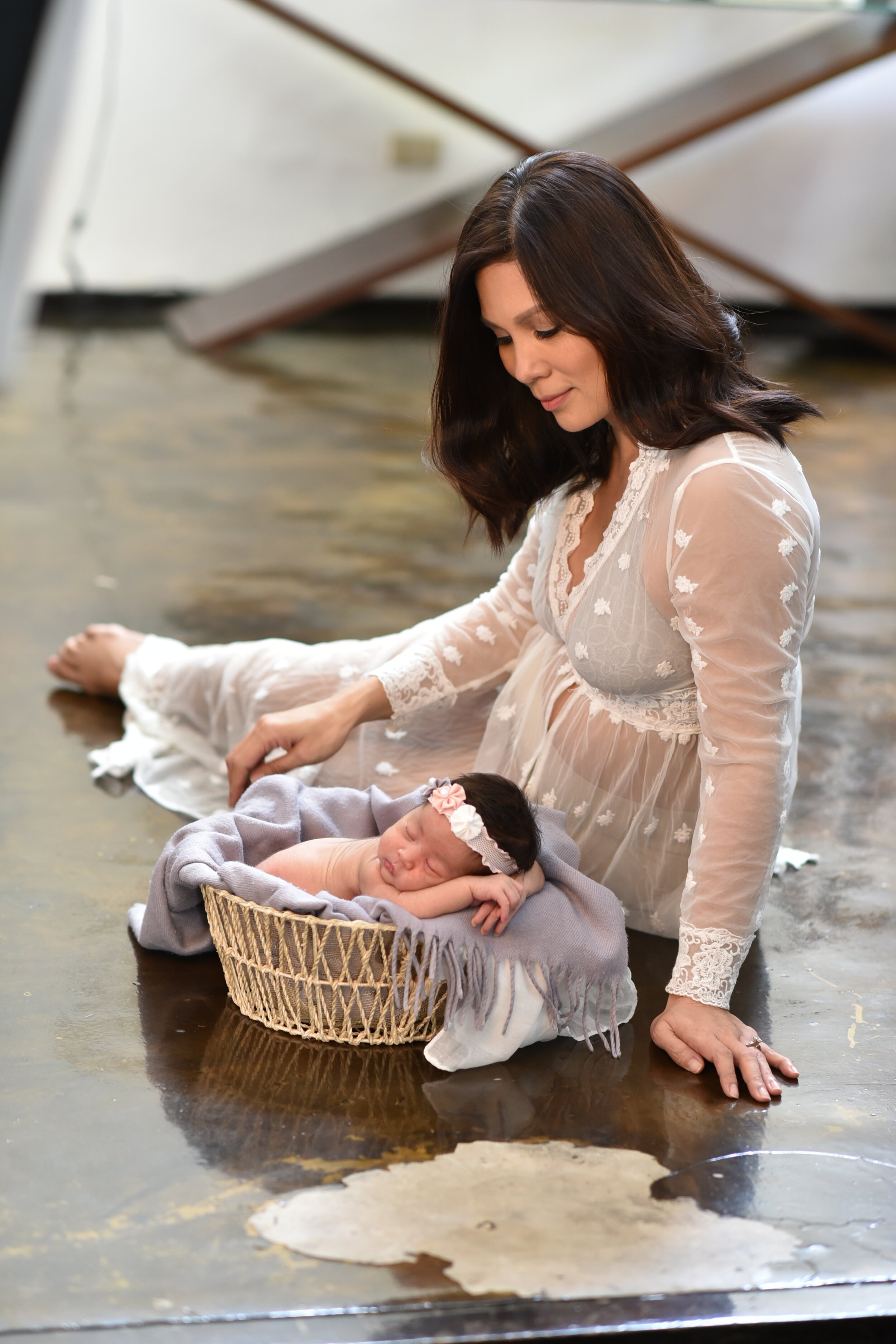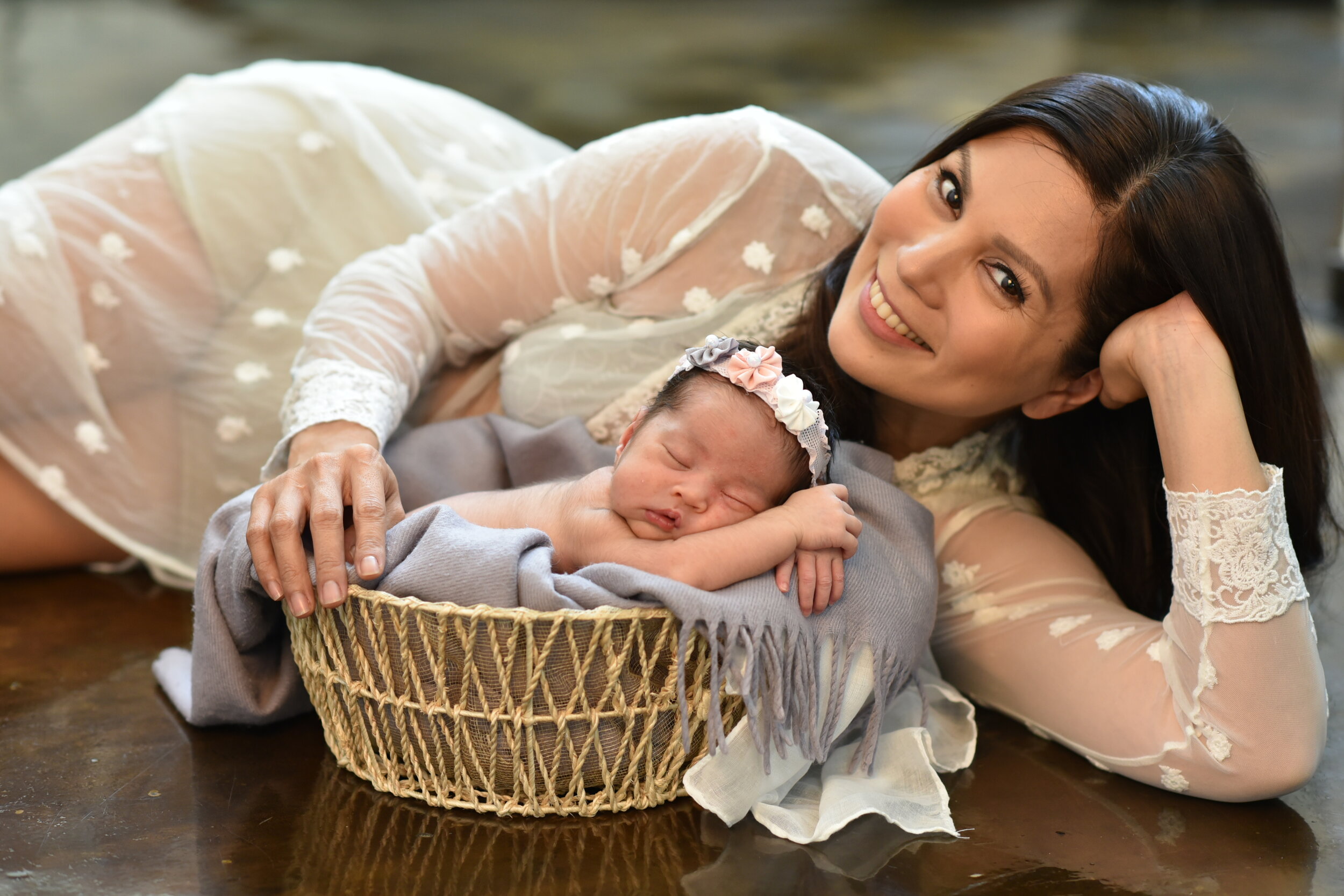The most people know of pre-eclampsia is that it was Lady Sybil’s cause of death in the hit British television series, Downton Abbey. This fact was echoed by Patricia Bermudez-Hizon who candidly shared her story of pre-eclamspia with Mommy Mundo. “About four or five people mentioned Lady Sybil to me when they reached out,” she said. “It really isn’t something people know about, and yet it’s quite dangerous.”
Hizon with her baby girl.
Hizon speaks the truth. Though it is a reality that happens, pre-eclampsia is seldom discussed among mothers. Perhaps it is because only “6% of pregnancies are affected by it, and only 1 in 2% become severe cases.” In the case of Hizon, it was severe and rare. Only 3% of women have post-partum pre-eclampsia, which is what Hizon went through just a day after her discharge from her third pregnancy.
As Hizon tells the story, her first symptom was feeling exhausted and swollen. The swelling started with her feet and legs. Knowing she’d just given birth and thinking that she was just tired, she chose to rest in bed. The following day everything was even more swollen, and she felt tight. “Manas,” she said. “My manas was so bad.” Still she thought to rest, until the third day it was her throat that started to swell, and it was coupled by dizziness, feeling nauseated, and exhausted.
She chose to text three of doctors, a pediatrician (her aunt), her OB GYN, and a cardiologist and described her symptoms. All three of them told her to rush to the hospital. She called her husband, who rushed back home and drove her to the hospital in record time. By the time she arrived at the emergency room Hizon’s blood pressure was at 130, her normal being 90/60. In less than half an hour it was up to 190. High blood pressure is another symptom of pre-eclampsia.
Hizon began losing all the protein from her system. “I was peeing it out,” she said. “I was starting to show signs of organ failure, and I was on seizure watch. There was a possibility I could have a stroke.”
The doctors and nurses from multiple departments in the hospital worked to get Hizon’s blood pressure to normal, while also still caring for her baby. “My husband was allowed to stay in the breastfeeding room with my newborn—she was less than a week old! And the nurses were pumping milk from my breasts to give to Vince so he could feed the baby.”
Though home and happy with her baby, Hizon is not yet cleared of pre-eclampsia.
Hizon is grateful for all the doctors and nurses that attended to her and kept her alive, as well as attended to her baby during the process. Though she survived the worst, she is not yet clear of pre-eclampsia. Rest is needed. She needs to continue to take it slow, take vitamins and supplements, and monitor her blood pressure 2-3 times a day.
Pre-eclampsia can happen anywhere beginning the 20th week of pregnancy until after giving birth. Sometimes it happens while in labour. There is no identified cause for it, and it knows no age or physical ability. Perfectly fit mothers can develop pre-eclampsia. What is important for most to remember is that it is easy to detect and can be avoided and treated so long as expecting mothers know what to watch for and report.



Leave a Reply